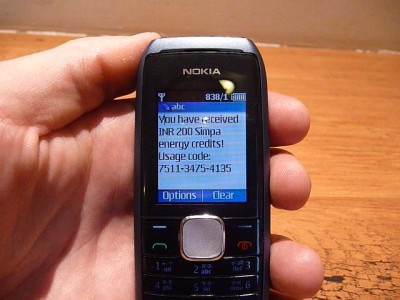Energy for the BoP Made ’Simple’
Note: For more, please see the full transcript of my interview with Jacob Winiecki of Simpa.
In the BoP market, there are few opportunities greater than energy.
Around 1.6 billion people rely on kerosene. Another billion have unreliable access to the energy grid and are prone to frequent brownouts. The scale of the demand is matched by the challenges of delivering quality products at a price the poor can afford. Companies serving the BoP energy market have struggled with the tradeoff between these two dimensions: quality and price.
One approach is to focus on functionality, offering an expensive and comprehensive product that needs to be coupled with end-user financing, from an MFI or elsewhere. Another approach is to focus on design and production, creating a modular device at minimal cost and relying on a high volume of sales to make up for low margins. But financing rural energy delivery is expensive and risky, and the quality and durability of inexpensive lanterns is often low.
One company, Simpa Networks, has developed an interesting platform for offering high-quality solar products to the BoP market. The key is affordability – a reasonable upfront cost with manageable payments over time. Simpa manufactures a solar home system that – unlike several other systems – is off-the-shelf, and easy to install and maintain. It is designed to meet the basic electricity needs of a household. The real innovation is Simpa’s unique “Progressive Purchase” pricing model, a micropayments system specifically designed to fit the unpredictable incomes of the poor that allows customers to spread the cost of the system over several years.
Progressive purchase is patterned after the pre-payment systems used by numerous mobile telecom providers in the developing world.
“We spent a long time learning from the mobile sector,” says Jacob Winiecki, one of the founders of Simpa. “One important driver of the rapid expansion of mobiles has been pay-as-you-go pricing and cost of hardware, followed by fully flexible pricing. We saw an opportunity to not only apply pay-as-you-go pricing to energy, but to use it as a vehicle for making high-quality energy systems ’affordable’ to the wider market with little access to credit and more energy demands than just basic lighting.”
(Above: Simpa customers make payments via their mobile phones. Over time, the model allows customers to essentially lease their power system until they can pay it off in full. Image courtesy of Simpa).
Under the progressive purchase system, the customer prepays for a certain number of kilowatt hours of electricity. When the prepaid energy has been exhausted, a device (patent-pending) called the Simpa Regulator temporarily disables the system until a new payment has been made. Accounts are settled via the Simpa Revenue Management System, cloud-based software used for managing payments. Simpa customers can make payments using an energy scratch card, sending the code to Simpa via mobile phone, or through the local agent network. All of these small payments accrue toward the cost of the system. Once the purchase price is fully paid off, the system is unlocked permanently to deliver free energy.
“Simpa aims to turn a perpetual BoP expenditure into asset ownership,” says Winiecki.
The system is simple and intuitive. Customers effectively lease the system, paying the cost over time. Flexible payments allow the customers to make purchases based on needs and means. The book, Portfolios of the Poor, not to mention numerous other sources, has shown that the incomes of the poor are erratic. Families will purchase extra kerosene when they have money and they won’t purchase any kerosene when they don’t. The Simpa model appreciates this dynamic and effectively mimics the way kerosene is purchased – on an ad hoc, as-needed basis. In addition, the promise of owning the system outright one day will push people to continue to pay.
What makes Simpa unique and especially innovative is its understanding of the financial profile of its target clients. The key to accessing the BoP market is designing products that are a) affordable, b) practical, and c) durable. By adapting its product to the fit the profile of its customers, Simpa has been able to create a product that meets these requirements.
To be sure, there are challenges to face. Ensuring repayment, achieving scale, and developing a comprehensive distribution model will take time. But with two ongoing pilots in India, a partnership with Selco, a leading Indian solar provider, and $1.1 million in venture capital funding, there is room to grow. If successful, the “progressive purchase” system of payments has the potential to change the paradigm of pricing models for the poor.
Note: For
- Categories
- Energy

